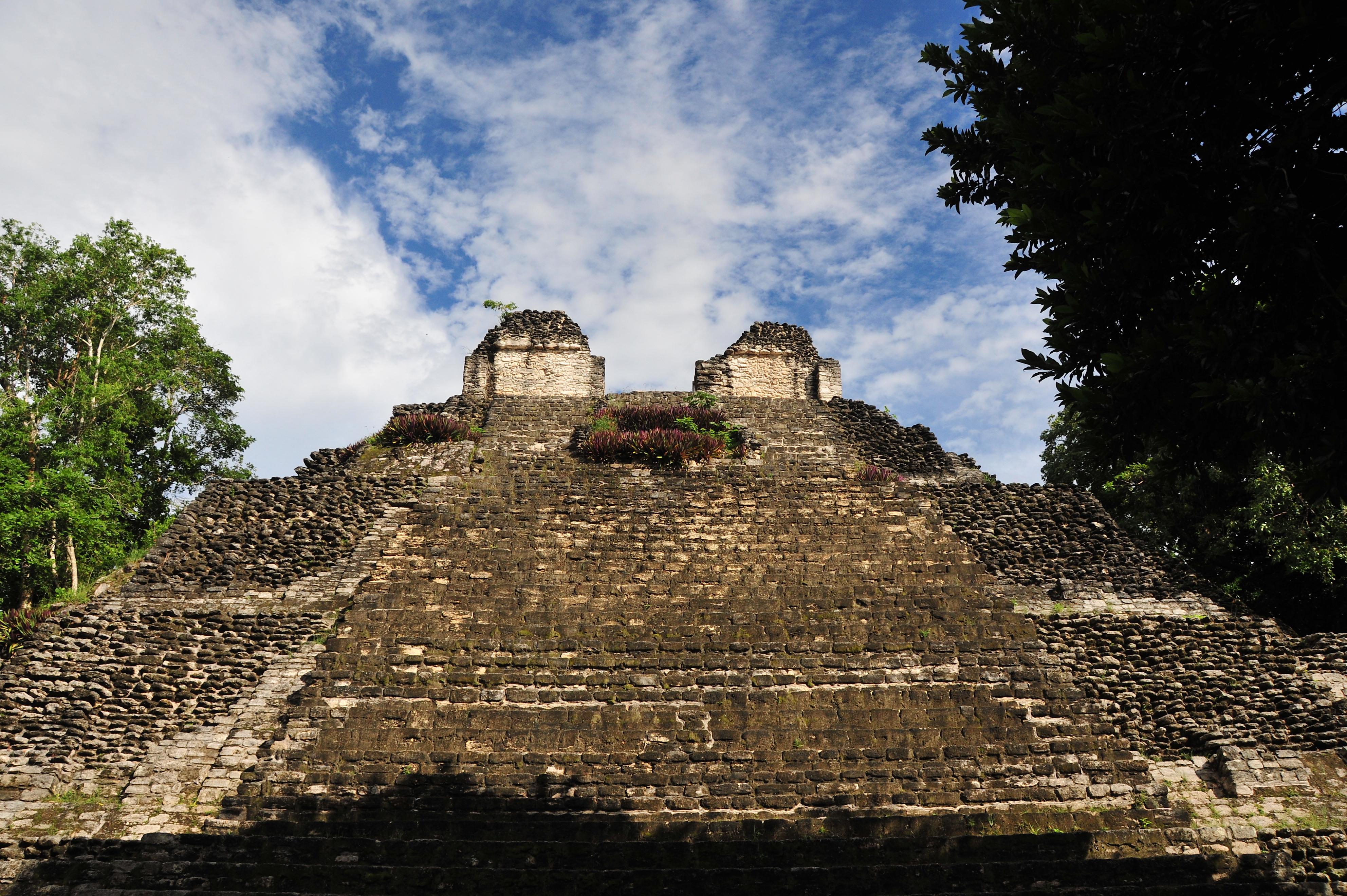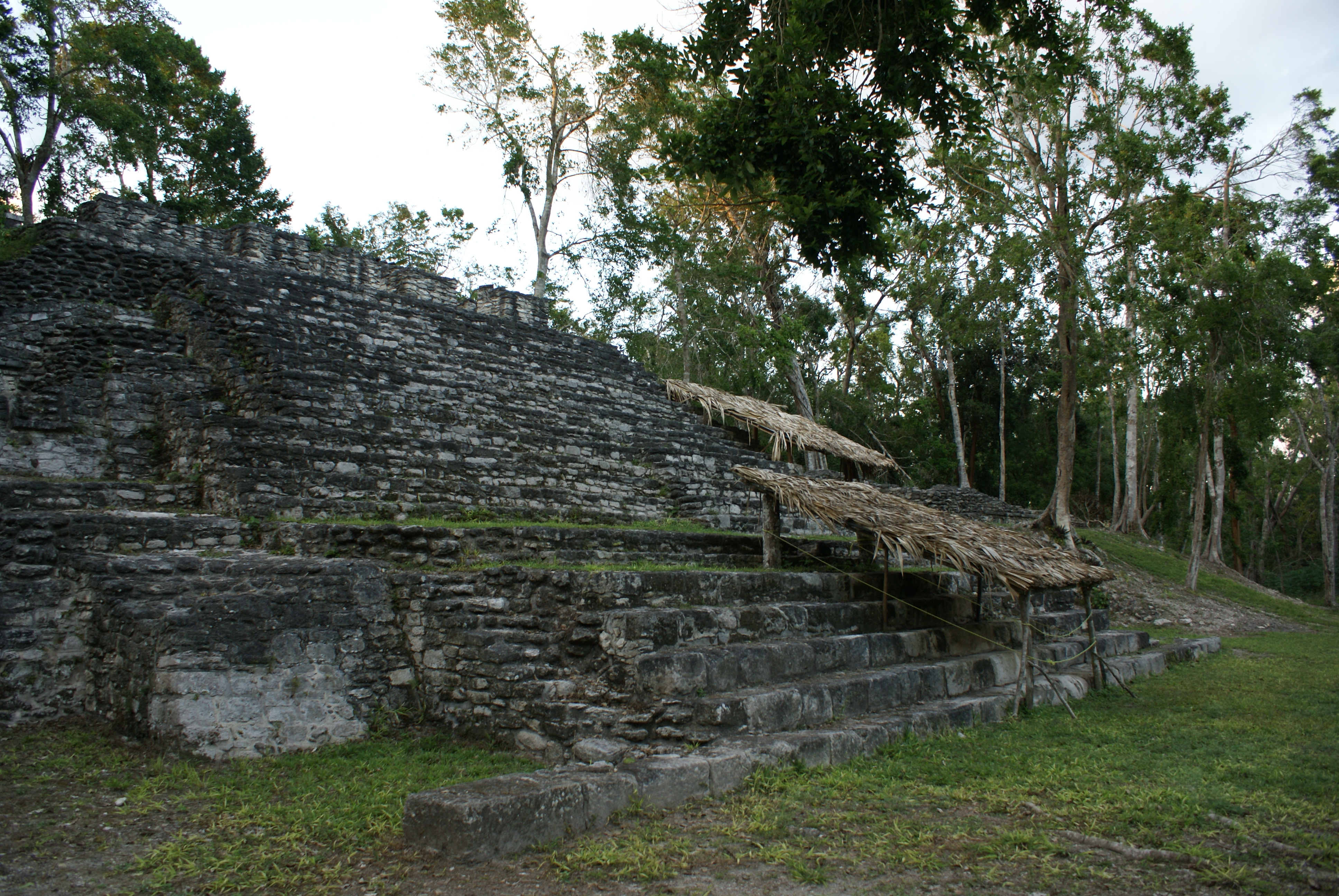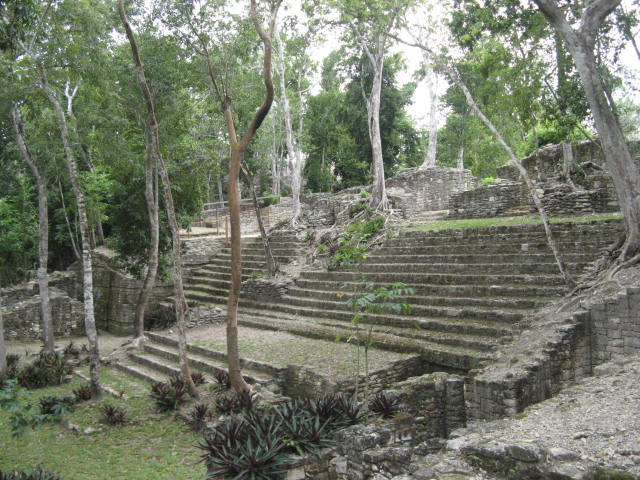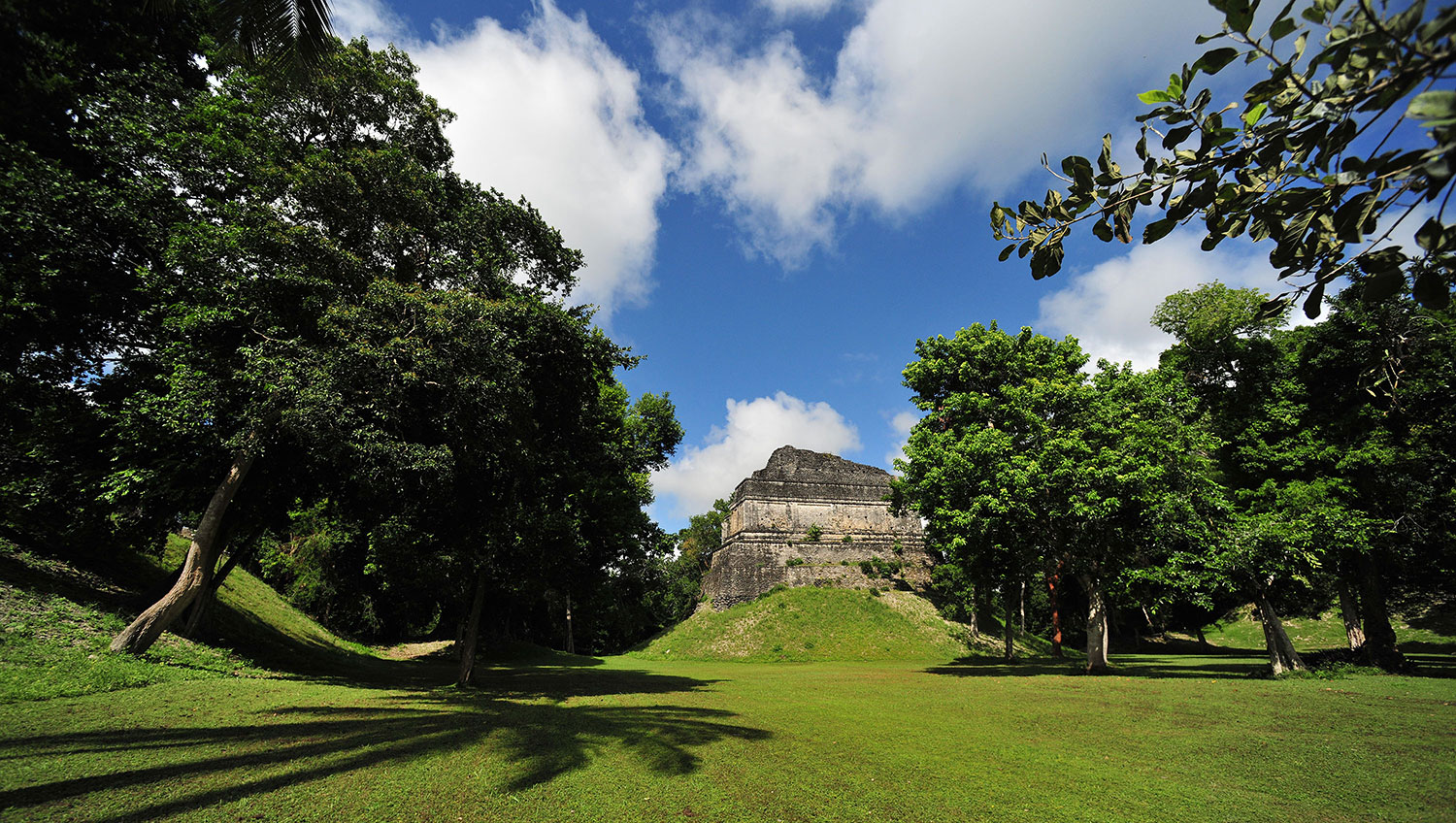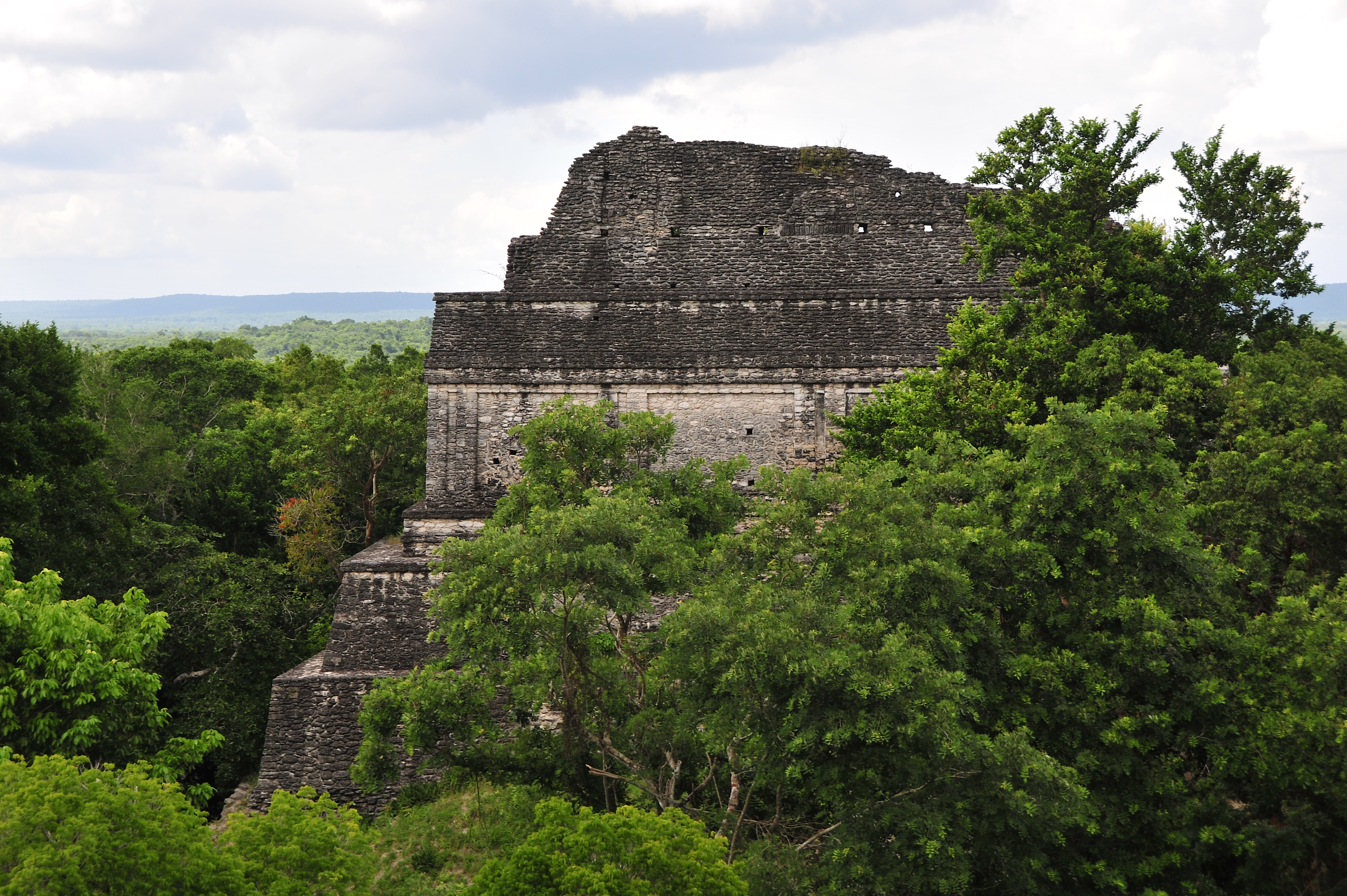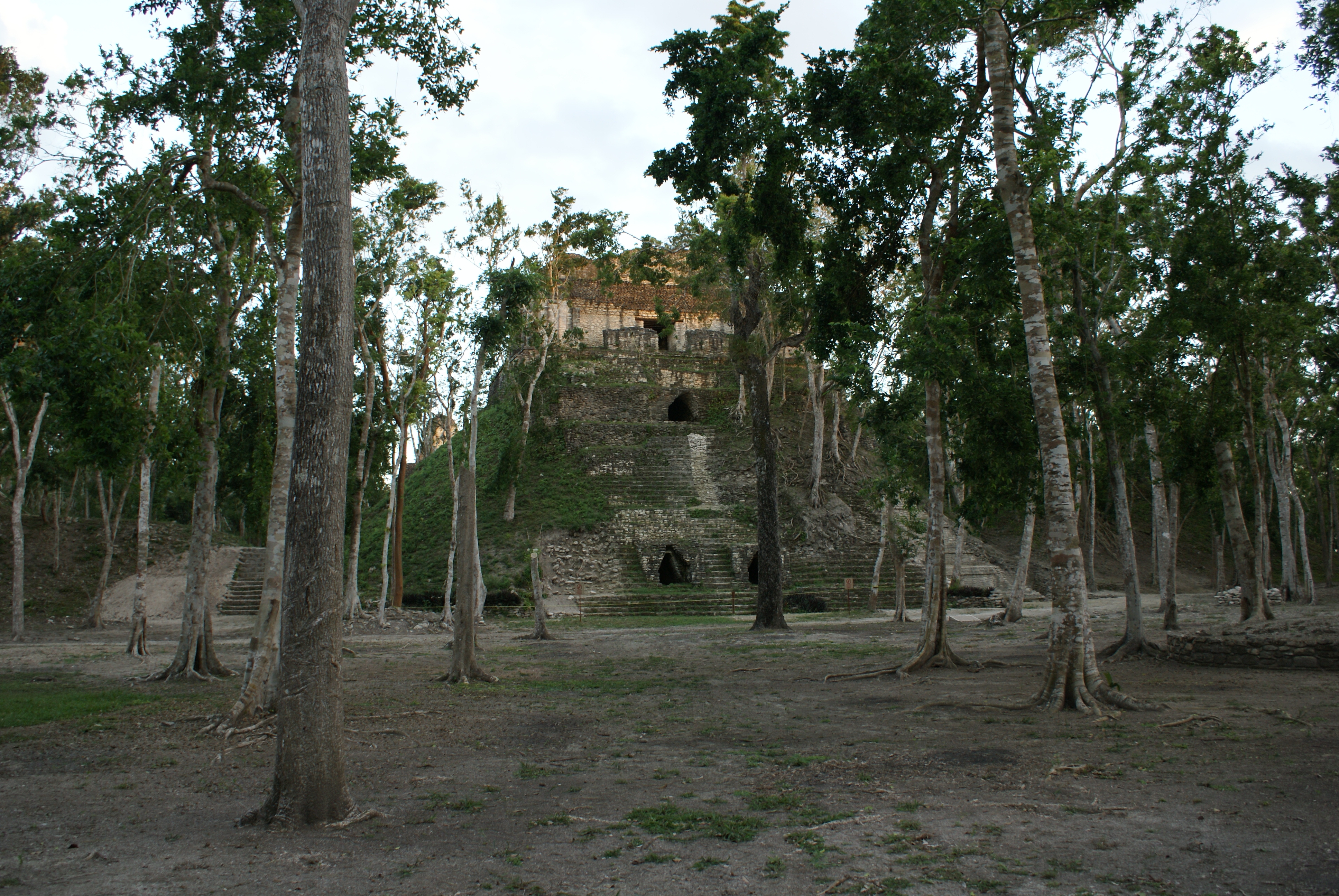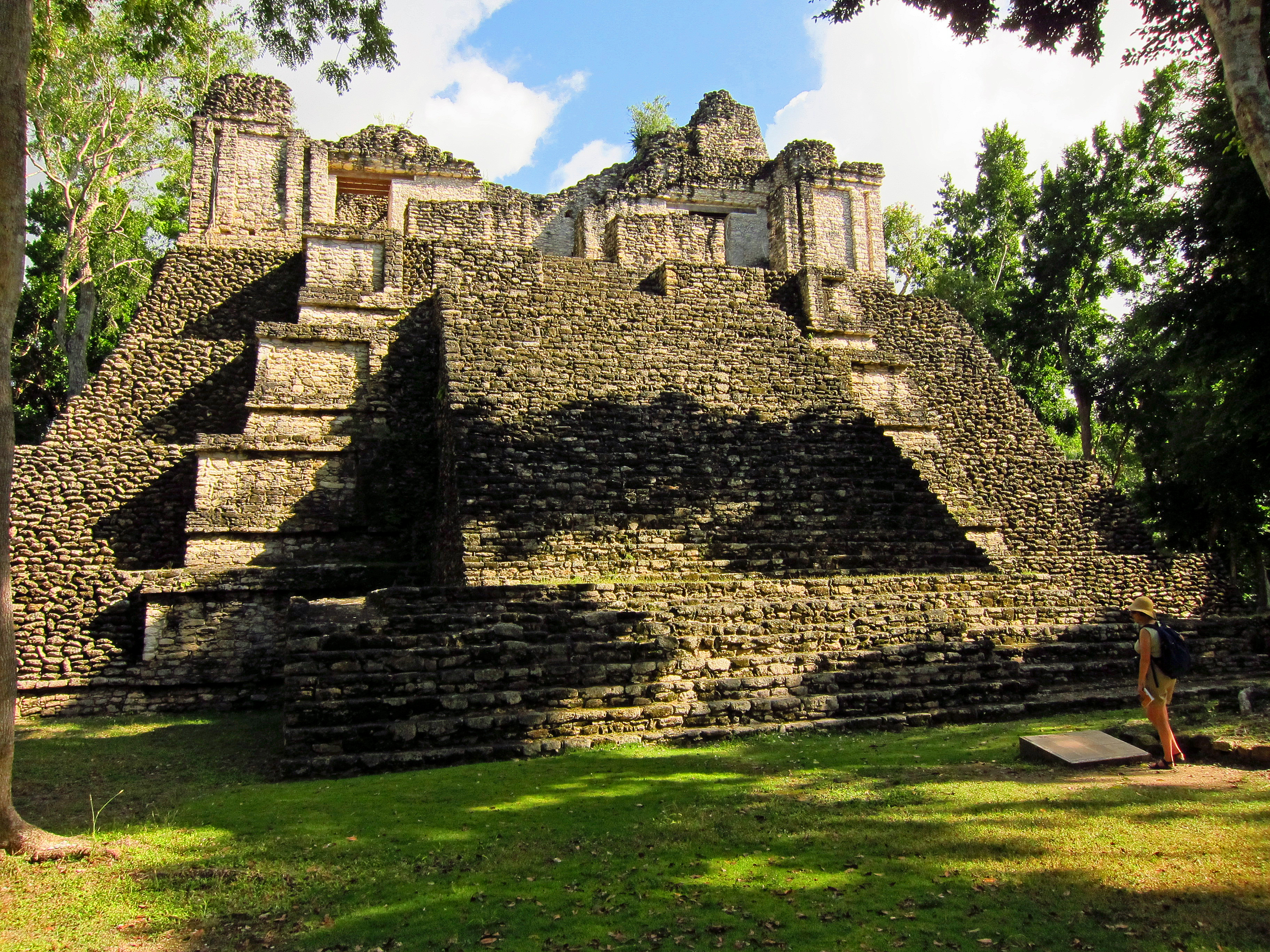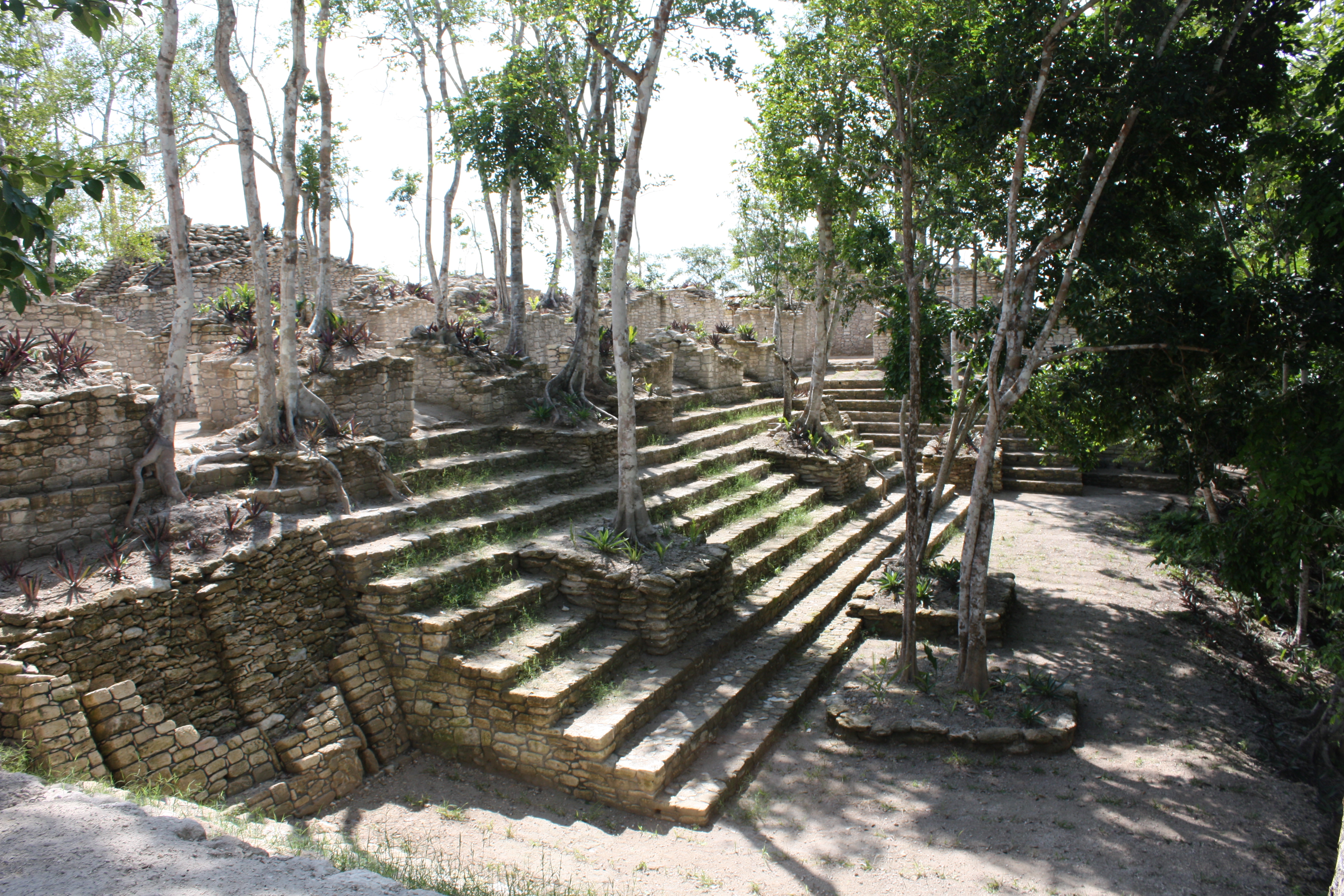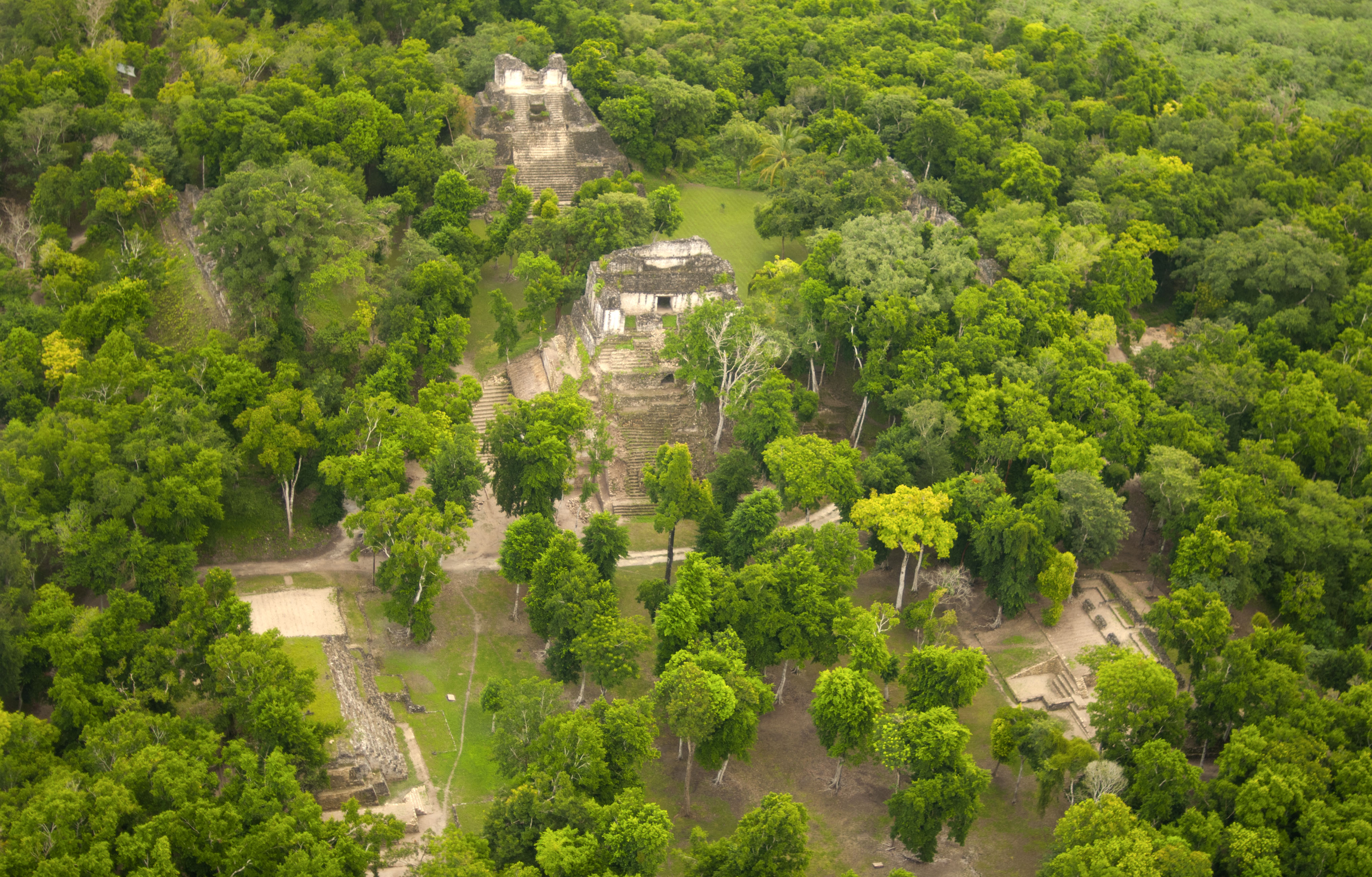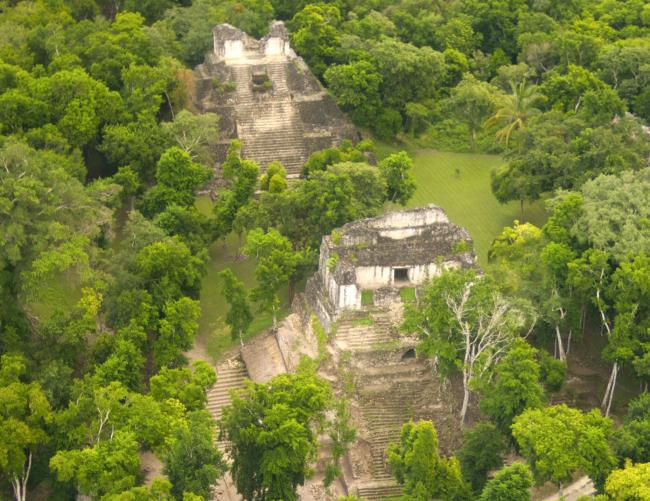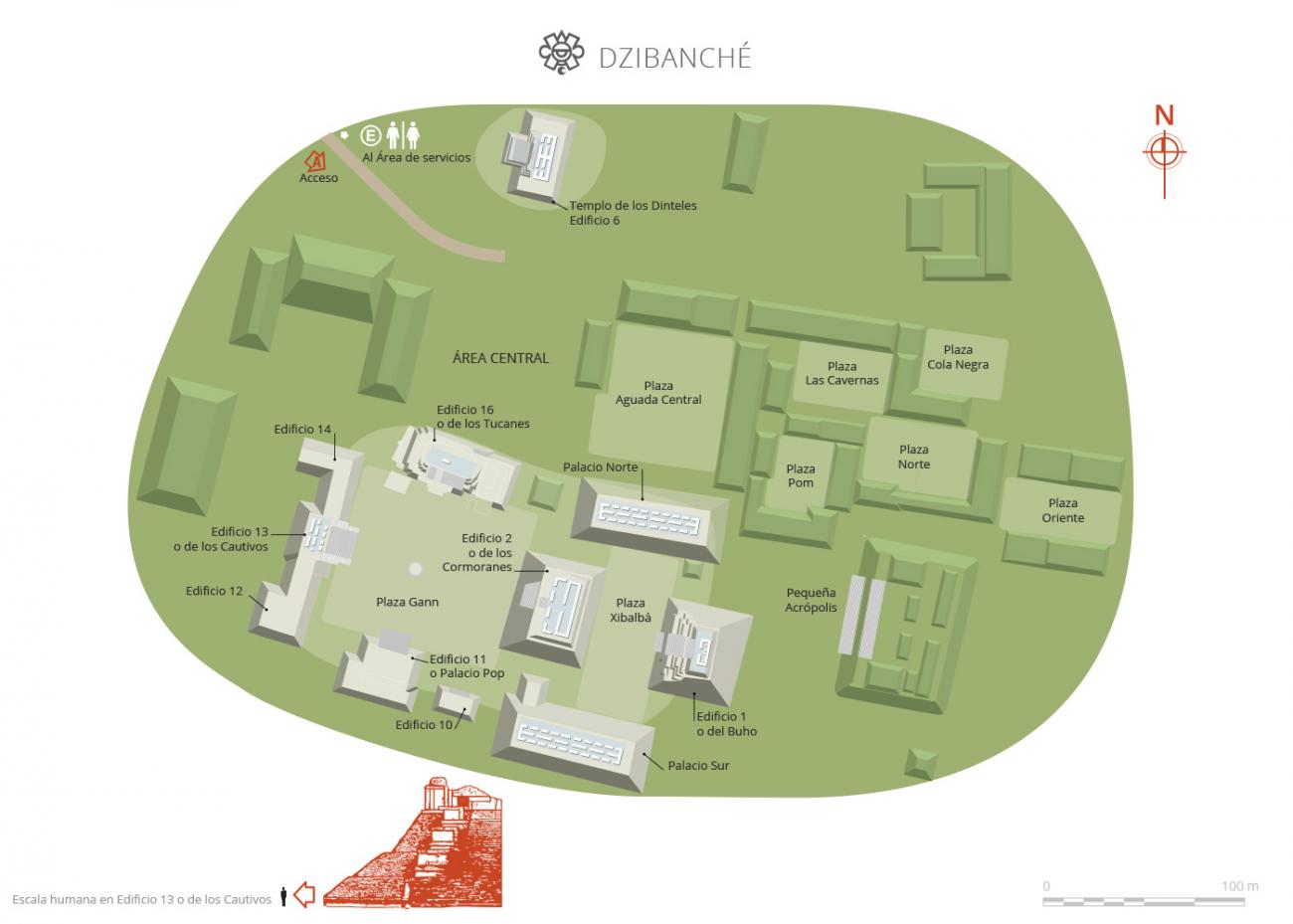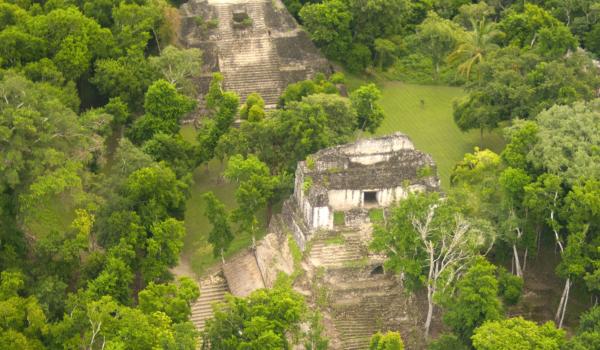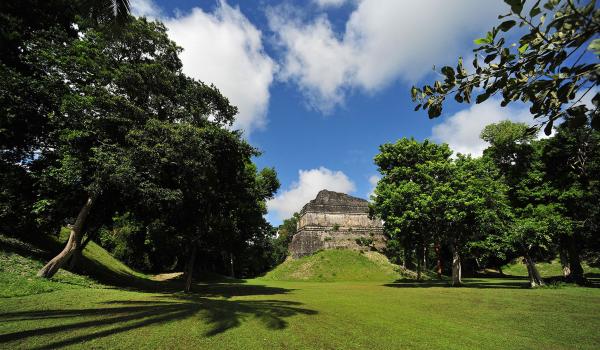An extensive site which combined civic and ceremonial spaces with interspersed and surrounding residential areas. The latter consist of residential units laid out in various arrays expressing particular forms of domestic organization, social status and the activities of the residents.
Of the four groups, Dzibanche and Tutil appear to have been built over an extended time period, whereas the other two seem to have functioned for a short time: Kinichna in the first half of the Classic and Lamay towards the end of the same period.
It was a very populous center combined with farmed areas, houses, religious and government spaces. The settlement was dispersed with its main routes defined by sacbes, which were roads covered with white stucco. They were not marked out with the intention of regulating the growth of the site, or with the notion of creating a grid pattern.
Dzibanche always had various centers of civic and ceremonial activity. It seems that each performed specific functions which were not repeated in any other center. Dzibanche has one or possibly two ballcourts, which are not present in the other complexes. Kinichna is really an acropolis, a special building unparalleled in the south of Quintana Roo. Tutil has its own interior layout with a multitude of small architectural complexes associated with rituals. All this leads to the conclusion that the greater Dzibanche settlement is a complex divided intentionally with the purpose of maintaining political and ideological control of a population of farmers and small artisans settled with houses and farmed areas in a typically Mayan dispersed pattern.
This peculiar way of operating must have led to ceremonies taking place in different parts of the main settlement, depending on the event taking place and the purpose of the main buildings in the different architectural complexes, and also on the type of economic activity or the government office being performed. For example, the market would be held in one of these centers, planning would take place in another, while ceremonial handovers of power in yet another.
Because of its location in a transitional zone, Dzibanche enjoys great natural abundance, ensuring access to a wide array of basic resources, including raw materials and products made far away. The favorable geographical location implies the possibility of controlling and monopolizing communication channels and the flow of goods of all sorts. This type of transitional areas between two or more ecological zones is known as an ecotone, and these tend to be places where regional trading nodes develop.

